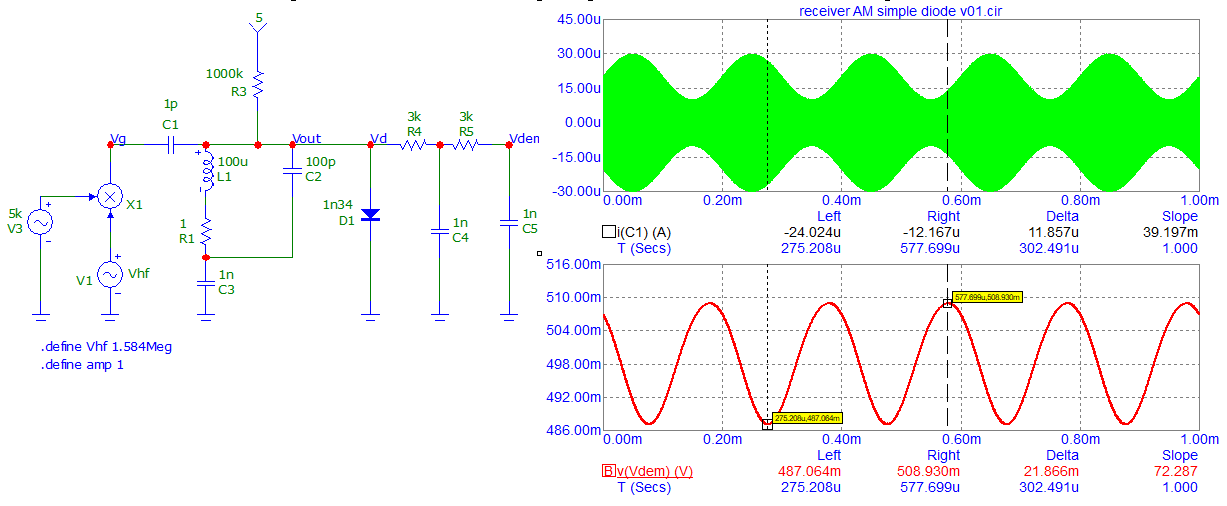After some months I went back to try to make my AM radio work.
This is the schematic:
ANT is a 16 meters long straight copper wire (insulated).
R1 and C2 gives a time costant \$ \tau = 114 \, \mu s\$ in between the fast carrier and the highest audible frequency. R2 and C3 is low pass filter with a cut frequency of \$ 18000 \, Hz\$ to get rid of the carrier wave. AMP is the amplification stage done with an LM386 and 200 gain.
The fact is that I cannot tune to any station (I have a commercial radio that can pick up AM station, so I know there are some) and only hear static. I've seen many schematic like mine and some put a capacitor in the pF range at the foot of the antenna (but none explain the purpose of it, so I don't know why it should go there) so maybe that is the problem.



